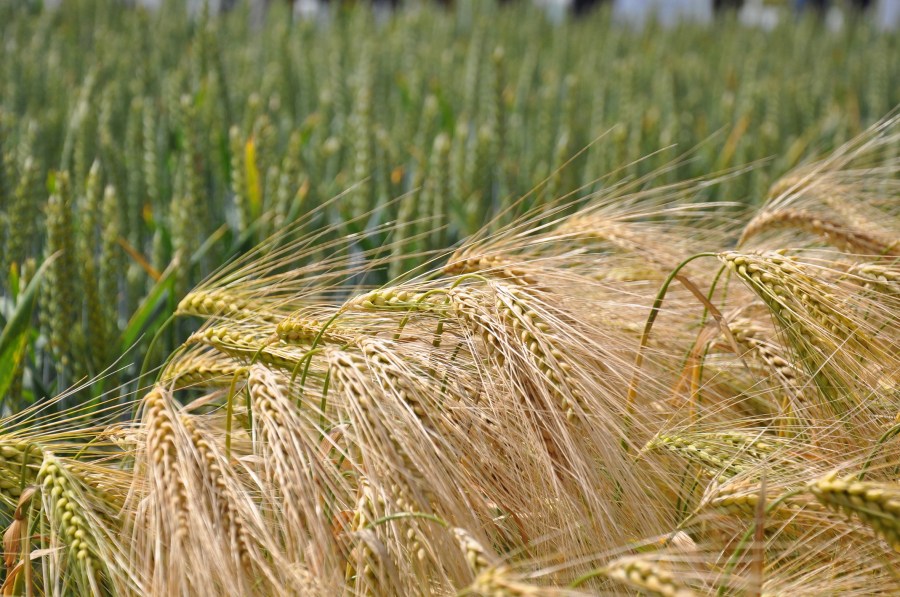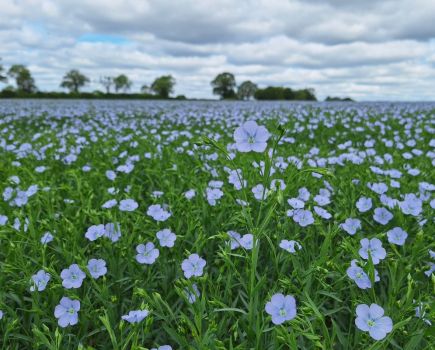A study conducted by Syngenta has shown that the choice of winter cereal crop grown can reduce ryegrass levels by nearly 90%. Charlotte Cunningham reports.
Conducted by Syngenta at its Innovation Centre in Staffs, the work recorded the numbers of ryegrass heads surviving in four winter crops – conventional winter wheat, conventional two-row winter barley, conventional six-row winter barley, and hybrid barley. Two varieties of each conventional cereal were grown and one hybrid barley.
Compared with an average of 69 ryegrass heads/m2 surviving in the winter wheat, conventional two-row winter barley reduced the number to 53, while conventional six-row winter barley reduced the number further, down to 30. But by far the biggest reduction occurred in hybrid barley – where ryegrass numbers were cut by nearly 90%, leaving just eight ryegrass heads/m2.
These figures were in the absence of herbicide applications, and with hybrid barley drilled at its standard rate of 200 seeds/m2, compared with 350 seeds for winter wheat and 325 seeds/m2 for the two-row and six-row conventional barleys.
“This new set of results mirrors other findings we have seen on grassweed suppression with hybrid barley,” explains Syngenta seeds technical manager, Paul Roche. “Not just against ryegrass but also against blackgrass and brome.
“Results from an earlier high pressure brome trial, for instance, showed that while winter wheat gave a 10% reduction in brome and conventional two-row and six-row winter barleys averaged 20% and 25% respectively, hybrid barley reduced brome levels by 69%.
“We believe hybrid barley’s particular ability to suppress grassweeds is due to its vigorous spring growth, its large root mass, its height, and its dense canopy. Greater suppression doesn’t just benefit the current crop, it also reduces grass weed seed return to the soil for subsequent crops.”
Previous trial work
Adding to this, Paul says previous trial work not only showed fewer blackgrass heads surviving in hybrid barley, but those blackgrass heads that did survive in the hybrid produced fewer seeds. Similarly, ryegrass work in 2019 showed that, of those ryegrass heads surviving in hybrid barley, more were below the crop canopy, where they were found to have fewer florets and therefore fewer seeds.
“Achieving good crop establishment across the whole field is also important for the best grassweed suppression. Where hybrid barley was planted at 100 seeds/m2 in the 2020 trial work to simulate poor establishment, it still maintained similar ryegrass suppression to conventional six-row winter barley.
“However, when its seed rate was increased to 250 seeds/m2, this reduced ryegrass levels even further than was achieved at 200 seeds – reducing ryegrass from eight to just two heads/m2. In situations such as headlands where soil compaction threatens establishment of any crop, there is a strong argument for planting hybrid barley at this higher seed rate.”
According to Paul, hybrid barley competition should also be used in combination with herbicides to minimise weed populations and seed return. “The combination of hybrid barley with the herbicide Axial Pro offers a reliable option in ryegrass situations. Hybrid barley is the crop of choice if having to drill early in grassweed scenarios.”
Ryegrass survival in different cereal crops
| Crop type | Seed rate (seeds/m2)
|
Number of ryegrass heads surviving/m2 |
| None | No crop | 126 |
| Hybrid barley | 200 | 8 |
| Conventional six-row winter barley | 325 | 30* |
| Conventional two-row winter barley | 325 | 53* |
| Winter wheat | 350 | 69* |
Source: Syngenta trial, 2020. Plots with no herbicides applied
* Mean of two varieties




